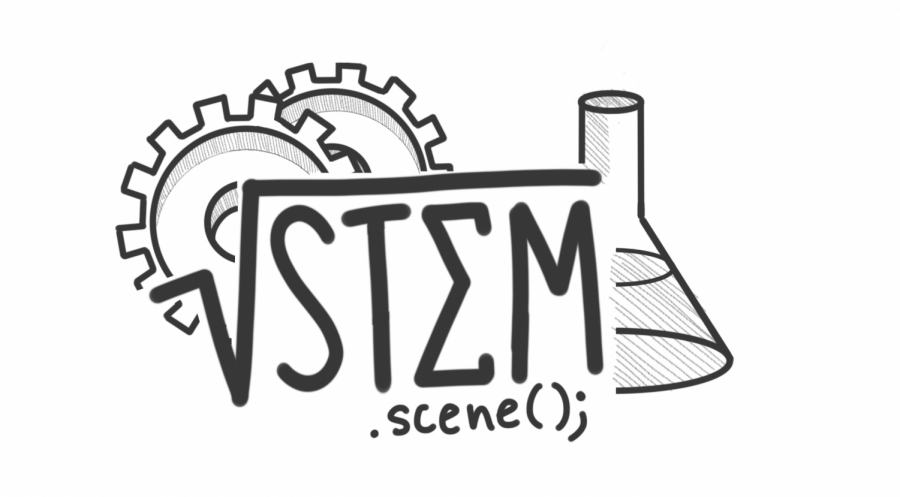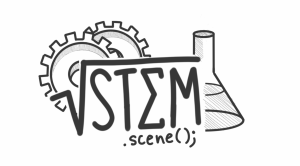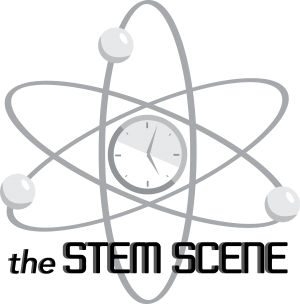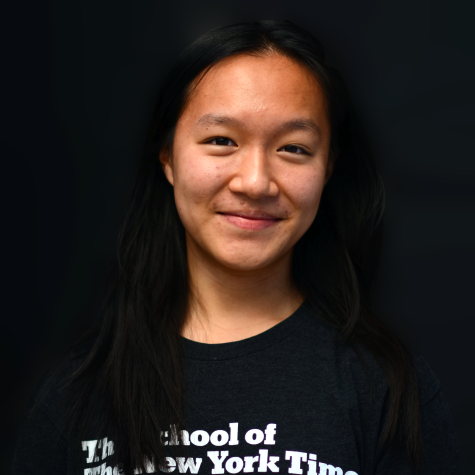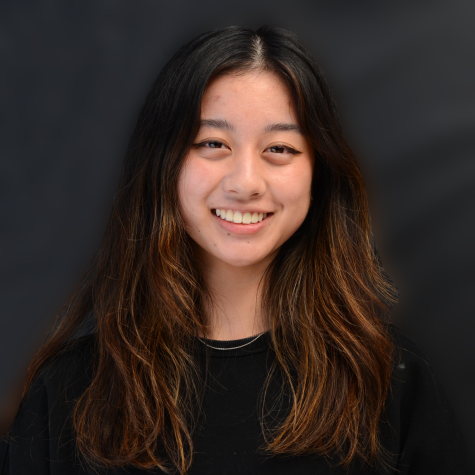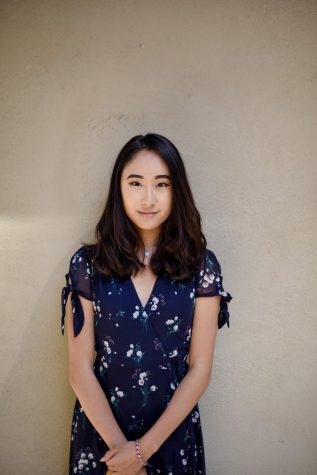STEM Scene: Online Edition
STEM Scene showcases briefs to update our community on the STEM world.
April 21, 2019
Measles outbreak
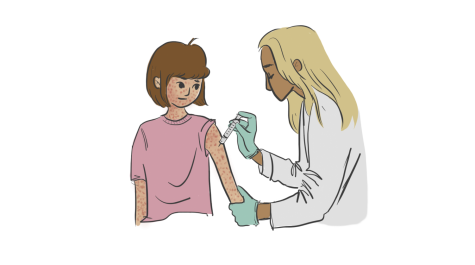
The number of measles cases and outbreaks this year has already passed the total amount of last year’s cases. From January 1 to April 11, 555 cases of measles have been reported in 20 states, including California, and it is the second-greatest number of cases in the U.S. since measles was eliminated in 2000, according to the Centers for Disease Control and Prevention.
In California alone, 23 cases have been confirmed as of April 17, with 13 of those being outbreak-related, according to the California Department of Public Health. Counties in which cases have occurred include Los Angeles, San Francisco, and Santa Clara.
As of April 18, 359 cases of measles have been confirmed in Brooklyn and Queens since October, according to the New York City Department of Health and Mental Hygiene. A majority of these cases has been from members of the Orthodox Jewish community, people who have low vaccination rates.
First-ever black hole image
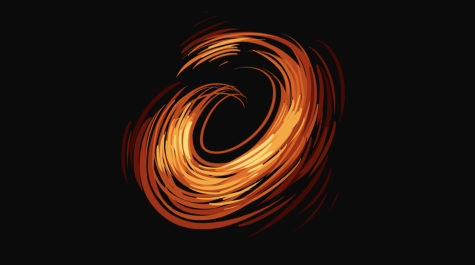
The first-ever image of a black hole was released on April 10, confirming the existence of the mysterious entities. The image was taken by using the Event Horizon Telescope (EHT), which used radio waves to map out the black hole’s silhouette. The project involved more than 200 researchers around the world and two years of analyzing data taken by a network of radio antennas across eight radio observatories in four different continents.
Released simultaneously during six news conferences around the world, the image shows a ring of fiery light surrounding a dark circle. The pictured black hole is billions of times larger than the sun and is located in Messier 87, a galaxy around 55 million light-years away from Earth.
29-year-old Dr. Katie Bouman, a postdoctoral researcher at the Harvard Smithsonian Center for Astrophysics, has become a symbol of women in STEM for her major contribution in constructing the image. While the scientists on the team behind the impressive feat, including Dr. Bouman herself, have repeatedly asserted that all parts of the process were a team effort, Dr. Bouman was a crucial figure in developing the algorithms that allowed scientists to analyze the collected data, which she had first started working on as a graduate student at MIT.
FIRST Robotics Competition
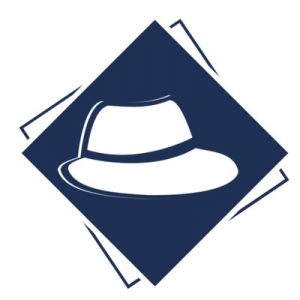
The upper school robotics team is participating in the FIRST Robotics Competition (FRC) in Houston, Texas, from April 16 to 21. This year will be the third time that Harker has qualified for this competition, the first time being in 2005 and the second in 2018.
In the international competition, teams are split into six divisions, and the winners of those divisions then advance to a round-robin type competition. The top six teams will ultimately compete for first place in the Einstein Arena, a football stadium at the Houston Events Center, where 10,000 people will watch the final match.
On top of competing, FRC will also be an opportunity for robotics team members to observe the techniques of some of the best teams from around the world, which strategy lead Aditi Vinod (10) is eager to see.
“It’s not just about the competition itself. There are a lot of things to learn from other teams, such as looking at their designs,” she said.
Robotics president Joel Manning (12) is also excited to see the work of teams outside of Silicon Valley.
“Normally, we’re kind of cooped up in our little area, and there are a few teams that are really good and interesting to watch, but then there are all of these other teams worldwide that do amazing things, and normally we don’t get a chance to see [their robots] up close, so that’ll be nice,” Joel said.
Club advisor and computer science department chair Dr. Eric Nelson looks forward to seeing the team compete in FRC and hopes to make this competition an annual event.
“Being a championship team is a new experience for our group that’s started to grow about three years ago,” Dr. Nelson said. “We’ve been on an uphill trajectory since we made some changes to the structure and added faculty and classes and more one-on-one mentorship. [I would say to my team,] keep doing what they’re doing, because what they’re doing is working.”
HarkerCTF spring tournament

The HarkerCTF Spring Tournament will be held in Nichols Hall on Wednesday, May 1 from 3 to 8 p.m. Students will compete in teams of two to four and complete computer science tasks like hacking into websites, decrypting files and writing scripts. Winners will receive gift cards of up to $300 per member and other prizes.
“We want students to learn about different vulnerabilities that exist in order to be able to build better programs in the future and know how to prevent against these kinds of attacks,” David Melisso (12), an administrator of the tournament, said.
David, who mainly writes problems related to computer forensics, hopes that students will have fun decoding the problems and enjoy themselves.
“I’m looking forward to just seeing people have fun. Last year, everyone was just having a blast, and they got a lot of joy from just solving the problems,” David said. “I’m looking forward to seeing people reverse my work. Even if you don’t know a lot about [computer science] beforehand, there’s plenty of resources, and it’ll be a lot of fun.”
Harker Research Symposium

WiSTEM volunteers Emma Dionne (10) and Vidya Jeyendran (10) lead one of the tables for WiSTEM’s food-based modeling activity. The symposium’s scheduled events included exhibit tables, keynote speakers, student and alumni panels, poster presentations and a variety of other activities and workshops.
The 2019 Harker Research Symposium was held at the upper school on April 13 and featured speeches from acclaimed keynote speakers including upper school alumni, talks from Regeneron Science Talent Search participants and awardees, poster presentations from more than 50 middle and upper school students and other exhibits.
“The goal of the Research Symposium is to expose the Harker community to see the research which Harker students have been conducting and to excite the general community about the upbringing and the future of STEM,” Women in STEM Club (WiSTEM) president Aarzu Gupta (11) said.
A new addition to this year’s Symposium was the STEM Buddies Project, where upper school volunteers led younger students in STEM-related activities, such as creating DNA out of candy and nurturing seed balls which students can bring home and plant.
Synopsys award ceremony
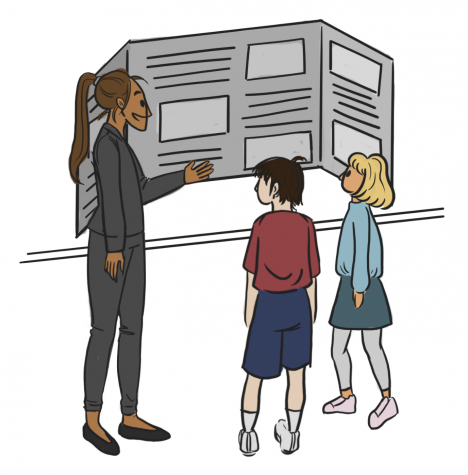
More than 30 upper and middle school students received awards during the Synopsys Silicon Valley Science and Technology Championship Award Ceremony on April 7. Students conducted experiments on research questions they developed, sponsored by a teacher mentor to provide assistance.
Freshman Kavita Murthy, who won the Inez M. Lechner Award for her project on the amount of heat-resistant genes found in conventionally and organically grown spinach, describes the ceremony as a rewarding experience for the effort put into projects and seeing her peers sharing her excitement.
“I was excited when I won an award. Although it’s not all about winning, it felt nice that I got something out of all the hard work I put into my project,” Kavita said. “I think the most memorable part of the ceremony was seeing people’s faces light up when they won an award. Since people didn’t know what awards they had won beforehand, it was really special to see their first reactions.”
USAYPT kicks off new season
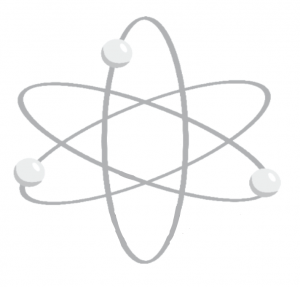
The upper school’s United States Association for Young Physicists Tournaments (USAYPT) team began holding meetings in early March and working on the tournament problems for next year. The competition consists of four experimental and theoretical problems for which students are tasked with developing solutions that will ultimately be presented by a team of four at the annual tournament held at Phillips Exeter Academy in Exeter, Connecticut in February 2020.
Upper school physics teacher and USAYPT team leader Dr. Mark Brada views the competition as an accurate preview of real-life science research that gives students a helpful sense of what research in these fields would be like.
“The reason why I like the tournament is because to me, it is the thing that most mirrors what is actually done in the real world of science. People have a problem they are trying to solve and they go off to the laboratory and collaboratively work toward their best ability to solve the problem and they go to a conference where they present their research findings,” Dr. Brada said. “I think it’s a really good model for how real science is done.”
The four problems are directly measuring the astronomical unit, investigating the properties of 216 magnetic spheres and their interactions, measuring the apparent weight of an hourglass while it is running and proving whether or not Archimedes’ Death Ray is possible.
Problem leader Sahil Gosain (11) looks forward to working with this season’s members, both old and new.
“A lot of the problem leaders last year are willing to work hard and early and get people involved in this activity, which is something that will translate into success in the end of the year,” Sahil said. “Just having this drive is the first step in order to actually try and work out these problems, and since we have that motivation this year, especially with the amount of new interested members joining, I feel like it’ll be a pretty good season.”


















![“[Building nerf blasters] became this outlet of creativity for me that hasn't been matched by anything else. The process [of] making a build complete to your desire is such a painstakingly difficult process, but I've had to learn from [the skills needed from] soldering to proper painting. There's so many different options for everything, if you think about it, it exists. The best part is [that] if it doesn't exist, you can build it yourself," Ishaan Parate said.](https://harkeraquila.com/wp-content/uploads/2022/08/DSC_8149-900x604.jpg)




![“When I came into high school, I was ready to be a follower. But DECA was a game changer for me. It helped me overcome my fear of public speaking, and it's played such a major role in who I've become today. To be able to successfully lead a chapter of 150 students, an officer team and be one of the upperclassmen I once really admired is something I'm [really] proud of,” Anvitha Tummala ('21) said.](https://harkeraquila.com/wp-content/uploads/2021/07/Screen-Shot-2021-07-25-at-9.50.05-AM-900x594.png)







![“I think getting up in the morning and having a sense of purpose [is exciting]. I think without a certain amount of drive, life is kind of obsolete and mundane, and I think having that every single day is what makes each day unique and kind of makes life exciting,” Neymika Jain (12) said.](https://harkeraquila.com/wp-content/uploads/2017/06/Screen-Shot-2017-06-03-at-4.54.16-PM.png)








![“My slogan is ‘slow feet, don’t eat, and I’m hungry.’ You need to run fast to get where you are–you aren't going to get those championships if you aren't fast,” Angel Cervantes (12) said. “I want to do well in school on my tests and in track and win championships for my team. I live by that, [and] I can do that anywhere: in the classroom or on the field.”](https://harkeraquila.com/wp-content/uploads/2018/06/DSC5146-900x601.jpg)
![“[Volleyball has] taught me how to fall correctly, and another thing it taught is that you don’t have to be the best at something to be good at it. If you just hit the ball in a smart way, then it still scores points and you’re good at it. You could be a background player and still make a much bigger impact on the team than you would think,” Anya Gert (’20) said.](https://harkeraquila.com/wp-content/uploads/2020/06/AnnaGert_JinTuan_HoHPhotoEdited-600x900.jpeg)

![“I'm not nearly there yet, but [my confidence has] definitely been getting better since I was pretty shy and timid coming into Harker my freshman year. I know that there's a lot of people that are really confident in what they do, and I really admire them. Everyone's so driven and that has really pushed me to kind of try to find my own place in high school and be more confident,” Alyssa Huang (’20) said.](https://harkeraquila.com/wp-content/uploads/2020/06/AlyssaHuang_EmilyChen_HoHPhoto-900x749.jpeg)



